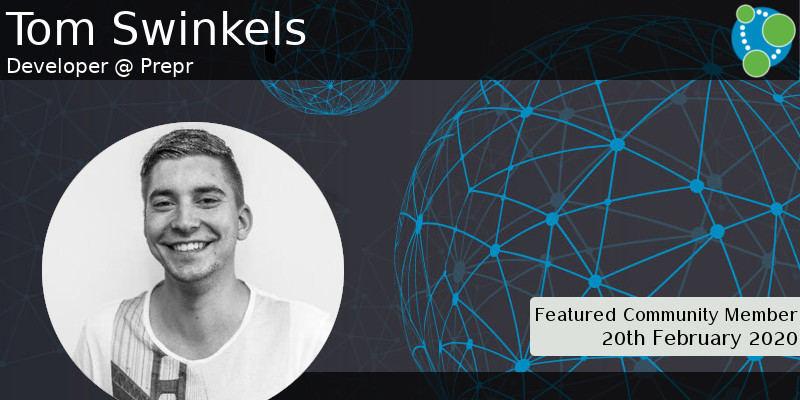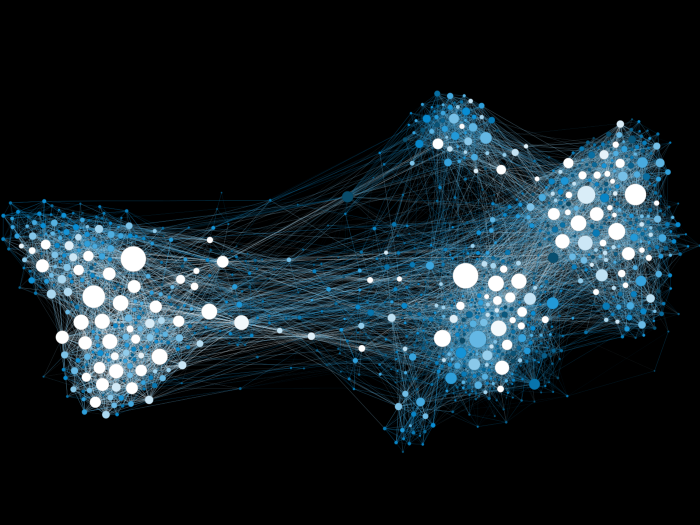Hi everyone,
Our video this week is an interview with NASA’s David Meza from Ashleigh Faith’s IsADataThing YouTube channel.
Jesús Barrasa analyses the structured data of the White House website, Clair Sullivan imports data from Python, and I show how to use Speaker Listener Label LPA.
And finally, Jack Collins createsPokémon teams using Neo4j and the Graph Data Science Library.
Cheers, Mark and the Developer Relations team
Featured Community Member: Tom Swinkels
This week’s featured community member is Tom Swinkels.

Tom Swinkels – This Week’s Featured Community Member
Tom is a web developer at prepr.io, which is using Neo4j as the backing database for a headless, data-driven CMS system. They just released a forever-free plan so if you want a modern graph-powered CMS, check it out.
Tim is active in the Neo4j community, helping folks with their questions on the Neo4j Slack channel. He is also working on a personal Dutch project called 112pers, which provides personalised emergency, weather, and flight information using Neo4j and Elasticsearch.
Thanks a lot for all your help Tom and good luck with your Neo4j based startup and projects.
Neo4j at NASA: Chatting with David Meza
Our video this week is an interview with NASA’s David Meza from Ashleigh Faith’s IsADataThing YouTube channel.
They discuss machine learning ethics, how to get started in graphs, and David’s experience using Neo4j to build the lessons learned database at NASA.
QuickGraph#15 Analysing the structured data embedded in web pages

In QuickGraph #15, Jesús Barrasa analyses the structured data embedded in the pages of the new White House website.
Jesus extracts the structured data in JSON-LD form, imports it into Neo4j using APOC and n10s, before exploring the graph using the Neo4j Browser.
Create a graph database in Neo4j using Python

In Clair Sullivan’s latest blog post she shows how to get data generated in Python into Neo4j.
Clair imports an arXiv dataset into a Pandas DataFrame and cleans up the data before importing it into Neo4j using the Python driver. She also shows how to query the resulting graph and analyse it from Python.
Speaker Listener LPA, IT Network Infrastructure, New Release of Cypher-DSL

- I wrote a blog post showing how to use the Speaker Listener Label Propagation Algorithm that was added to the Graph Data Science Library in version 1.5.
- Alexander Jarasch shares a short video showing how to look for hidden connections between diseases in a Neo4j knowledge graph.
- Graphalytic published a blog post showing how to visualise your IT Network Infrastructure.
- Michael Simons published version 2021.0.0 of Cypher-DSL. This release has support for index hints, mathematical functions, dynamic property lookup, and more.
Finding synergies with network analysis

Jack Collins uses Neo4j and the Graph Data Science Library to identify the best Pokémon teams.
After importing data from Smogon.com, a platform for online Pokémon battles, Jack uses the Louvain community detection algorithm to identify sets of Pokémon that are more frequently chosen together. He then visualises the results in the Neo4j Browser.
Tweet of the Week
My favourite tweet this week was by Mark Broadbent:
Current graph database status update for existing project…… A long way to go to get all current data modelled… #PrettyPictures #Neo4j pic.twitter.com/V11REeTENy
— Mark Broadbent (@retracement) February 18, 2021
Don’t forget to RT if you liked it too!



